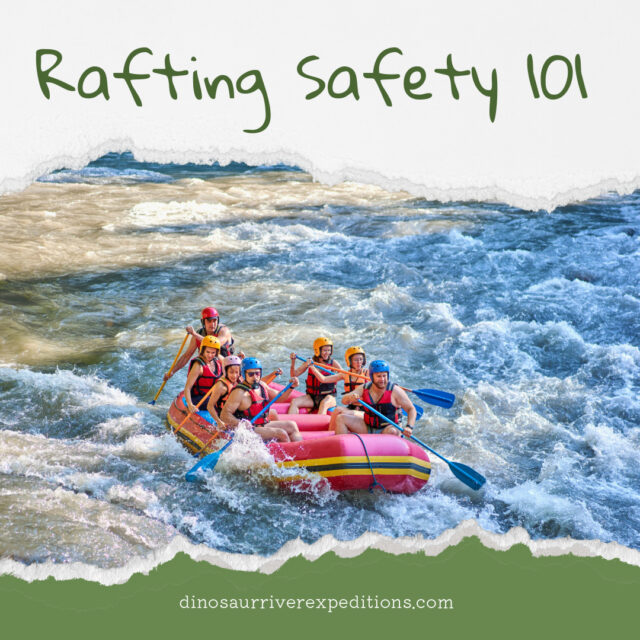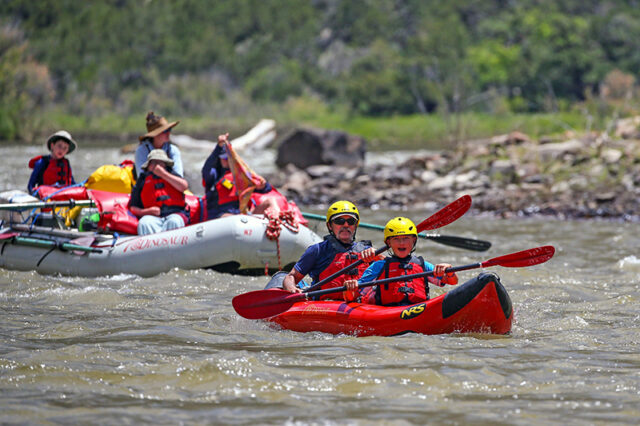Rafting Safety 101: Essential Tips for Families on the River

Key Takeaways for Family Rafting Safety
- Always wear properly fitted life jackets
- Listen carefully to guide instructions
- Know basic emergency procedures
- Choose age-appropriate rafting trips
- Prepare physically and mentally before the trip
- Respect the environment and wildlife
- Communicate openly with guides and family members
1. The Importance of Safety in Family Rafting Adventures

River rafting can be an exciting experience for families, but it’s crucial to understand and follow safety guidelines. By doing so, you’ll create lasting memories without unnecessary risks. Proper safety measures not only protect you physically but also enhance the overall enjoyment of the experience.
Before you hit the water, it’s important to learn about beginner-friendly rafting trips to ensure a smooth start for your family adventure. These trips are designed with safety in mind and offer a gentler introduction to river rafting, perfect for families with young children or first-time rafters.
2. Essential Safety Equipment for Family Rafting Trips
Having the right gear is key to staying safe on the river. Here’s what you need:
- Life jackets (PFDs): These must fit properly and be worn at all times. Ensure each family member has a Coast Guard-approved PFD that’s snug but comfortable.
- Helmets: Necessary for protecting your head in rapids. They should fit securely without obstructing vision.
- Proper clothing: Quick-drying materials and layers for changing weather. Avoid cotton as it retains water and can lead to hypothermia.
- Sunscreen and hats: To protect from sun exposure. The sun’s reflection off the water can intensify its effects.
- Secure footwear: Water shoes or sandals with ankle straps to protect feet and provide grip on wet surfaces.
- Waterproof bags: To keep essential items dry and accessible.
For a complete list of essential rafting safety equipment, check out our detailed guide. Remember, the right equipment can make a significant difference in your family’s safety and comfort on the river.
3. Pre-Trip Safety Briefing: What Families Need to Know

- Basic paddling commands and techniques
- What to do if someone falls out of the raft
- How to respond in case of emergencies
- River features and potential hazards to watch for
- Communication signals used on the river
- Proper seating and body positioning in the raft
These briefings are crucial for everyone’s safety. Make sure all family members, especially kids, understand the instructions. Encourage questions and clarifications to ensure everyone is comfortable and prepared.
For more information, read our guide on expert tips for first-time rafters. This resource provides additional insights that can help you feel more confident and prepared for your family rafting adventure.
4. On-River Safety Practices for Family Members
Once you’re on the water, keep these safety practices in mind:
- Stay seated and hold on when going through rapids
- Listen to your guide’s instructions at all times
- If you fall in, float on your back with your feet pointing downstream
- Avoid standing up in moving water to prevent foot entrapment
- Keep your arms and legs inside the raft unless instructed otherwise
- Stay alert and aware of your surroundings at all times
- Help fellow rafters if they need assistance, under the guide’s direction
Understanding how water conditions impact rafting safety is also important for a safe trip. Water levels, temperature, and current speed can all affect your rafting experience and the safety measures needed.
5. Emergency Procedures: Keeping Calm When Things Go Wrong

- If the raft flips: Stay with the raft and listen to your guide. Hold onto the raft’s safety line if possible.
- Man overboard: Throw a rescue rope or extend a paddle to help them back in. Remember the “Reach, Throw, Row, Go” rescue sequence.
- First aid: Guides are trained in wilderness first aid for minor injuries. Always inform your guide of any health concerns or injuries.
- Lost paddle: Don’t panic. Your guide will have spare paddles and will instruct on what to do.
- Separated from the group: Stay in a safe spot by the shore if possible and wait for rescue. Your guide will have a plan to regroup.
For more detailed information, check out our critical safety tips for first-time rafters. This resource covers additional emergency scenarios and how to handle them effectively.
6. Choosing the Right Rafting Trip for Your Family
Picking the right trip is crucial for family safety and enjoyment:
- Consider the age and swimming ability of all family members
- Start with easier trips for beginners
- Check the river’s difficulty level (Class I-VI)
- Think about the trip length and camping requirements
- Research the specific river and its characteristics
- Consider the season and typical weather conditions
- Discuss any concerns with the rafting company beforehand
For a family-friendly option, explore our Yampa River rafting trips. These trips offer a balance of excitement and safety, making them ideal for families with varied experience levels.
7. Preparing Your Family for the Rafting Adventure
Good preparation leads to a safer trip:
- Practice swimming and basic water safety
- Get in shape with cardio exercises
- Pack appropriate clothing and personal items
- Discuss expectations and concerns with family members
- Learn basic river terminology and hand signals
- Practice teamwork and communication skills
- Familiarize yourself with the specific river you’ll be rafting
For a complete checklist, see our guide on essential preparation tips for your rafting adventure. This resource will help ensure your family is fully prepared for the exciting journey ahead.
8. The Role of Professional Guides in Ensuring Family Safety

- They’re trained in river navigation and rescue techniques
- They know how to handle different family dynamics
- They provide clear instructions and support throughout the trip
- They’re knowledgeable about local flora, fauna, and river history
- They can assess and adapt to changing river conditions
- They carry safety equipment and first aid supplies
To see our guides in action, check out our expert-guided Colorado rafting trips. Our experienced guides are passionate about sharing their love for the river while prioritizing your family’s safety and enjoyment.
9. Environmental Safety: Respecting Nature While Rafting
Staying safe also means respecting the environment:
- Follow Leave No Trace principles
- Keep a safe distance from wildlife
- Be prepared for changing weather conditions
- Properly dispose of waste
- Learn about local ecosystems and their importance
- Avoid disturbing natural habitats
- Use biodegradable products when possible
Learn more about the natural wonders you’ll see on our Dinosaur National Monument trips. These trips offer a unique opportunity to experience pristine wilderness while learning about conservation and environmental stewardship.
10. Post-Trip Safety: Ensuring a Positive Family Experience
After your trip, take time to:
- Talk about the experience as a family
- Address any concerns or questions
- Share favorite moments and lessons learned
- Consider planning your next rafting adventure
- Review safety practices and how they were applied
- Discuss how the experience impacted each family member
- Reflect on the importance of teamwork and communication
Ready for more? Plan your next family rafting trip in Utah. Utah offers a diverse range of rafting experiences suitable for families looking to build on their skills and enjoy new adventures.
Conclusion: Creating Lasting Family Memories Through Safe Rafting
Rafting can be an amazing family experience when done safely. By following these tips and choosing a reputable outfitter like Dinosaur River Expeditions, you’re setting the stage for unforgettable adventures. Safety practices not only protect your family but also enhance the overall experience, allowing everyone to fully immerse themselves in the beauty and excitement of river rafting.
Remember, safety comes first, but fun is a close second! With the right preparation and mindset, your family can enjoy the thrill of the river while creating memories that will last a lifetime. Embrace the challenge, support each other, and savor the unique bonding opportunity that rafting provides.
For those seeking more excitement, check out our thrilling high-water rafting experiences. These adventures offer an increased level of excitement for families ready to take their rafting skills to the next level, always with safety as the top priority.



 Understanding river classifications helps you choose the right trip and prepare for the adventure ahead. Whether you’re looking for a calm float or an exciting ride, there’s a river out there for you.
Understanding river classifications helps you choose the right trip and prepare for the adventure ahead. Whether you’re looking for a calm float or an exciting ride, there’s a river out there for you.